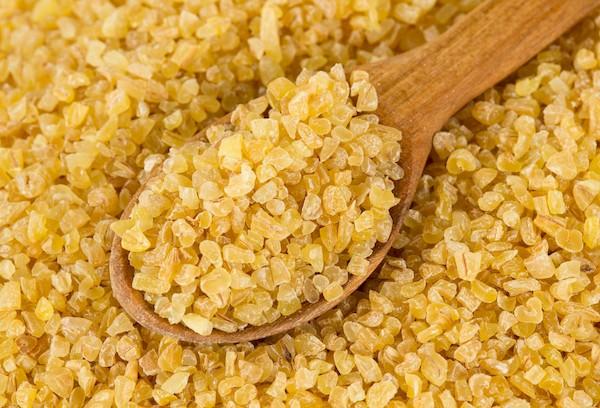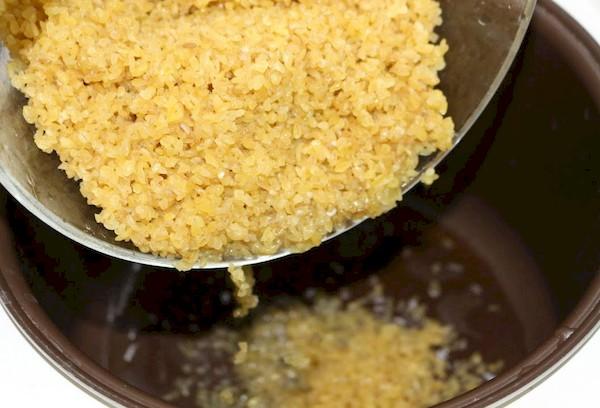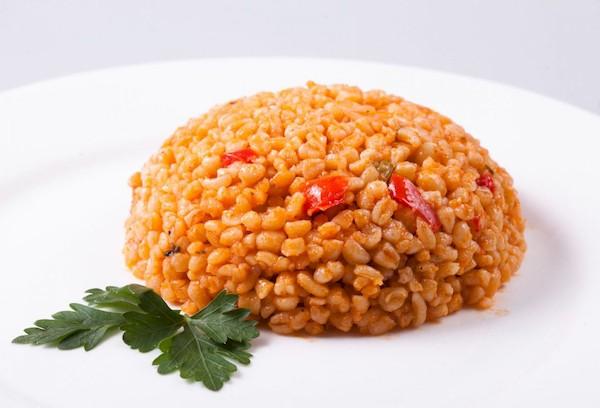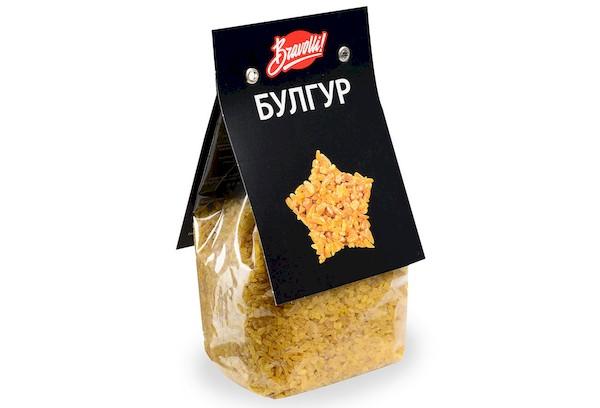What and how is bulgur made from?
Content:
Bulgur is a cereal made from thin grains that have a subtle nutty taste and aroma. Because of this feature, many are surprised to learn what bulgur is actually made from. Cereals are steamed and crushed wheat grains prepared using a special technology.
What and how is bulgur made from?
Like many other food crops, bulgur is made from wheat. Its difference from analogues is not in the raw materials, but in the method of processing it, so you can understand what kind of cereal is in front of you by its appearance.
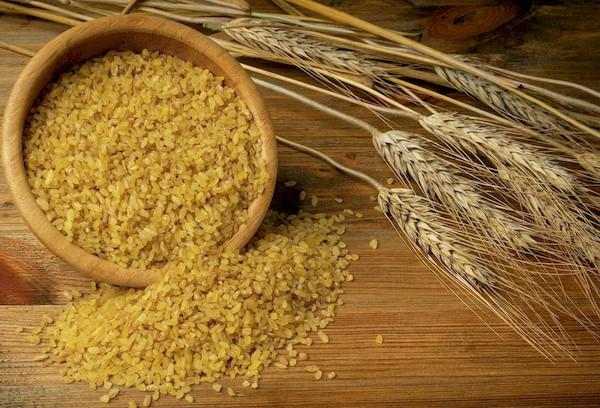
The traditional processing method is:
- Heat treatment of wheat cereals. The grains were boiled in large cauldrons until the desired softness was achieved.
- Drying the raw materials from which the cereal is made. The originally boiled cereal was dried in the fresh air, laid out in a thin layer. Specially trained people ensured that the cereal dried evenly and turned it over from time to time for 3 days.
- Peeling. Initially, this process was carried out manually, using a mortar and pestle.However, hundreds of years ago people began to invent special devices to make work easier - for example, millstones that rotated with the help of the movement of a horse.
- Removing the husk. After the raw material had completely dried, it was thoroughly blown to remove small debris and husks.
- Grinding the finished product. During this phase, hand mills, sieves and millstones were used at various times, but the process is now fully automated. As a result of this step, the grains are sorted based on size.
Of course, in our time, the process of processing cereals is highly automated and optimized - cereals are produced in large factories. However, industrial production does not affect either the taste or nutritional value of the cereal. By and large, millet goes through all the same stages, only with less use of human resources.
What is contained in 100 grams of bulgur
Bulgur is made from wheat and is rich in complex carbohydrates, so you will be full for the whole day - bulgur (100 g) contains as many as 75.9 g of carbohydrates. The same amount also contains 1.33 g of fat, 12.29 g of protein and 9 g of water.
In addition, cereals are rich in vitamins and microelements:
| Vitamin/Mineral | Contents per 100 g (µg) | Percent Daily Value (%) |
| Beta carotene | 5 | 0,1 |
| Vitamin E | 1 | 0,4 |
| Vitamin K | 1,9 | 1,6 |
| Vitamin B1 | 2 | 19,3 |
| Vitamin B2 | 1 | 8,8 |
| Vitamin B3 | 51 | 32 |
| Vitamin B4 | 281 | 5,6 |
| Vitamin B5 | 10 | 20,9 |
| Vitamin B6 | 3 | 26,3 |
| Vitamin B9 | 27 | 6,8 |
| Calcium | 350 | 3,5 |
| Iron | 25 | 24,6 |
| Magnesium | 1640 | 41 |
| Phosphorus | 3000 | 42,9 |
| Potassium | 4100 | 8,7 |
| Sodium | 170 | 1,3 |
| Zinc | 19 | 17,5 |
| Copper | 3 | 37,2 |
| Manganese | 30 | 132,5 |
| Selenium | 2,3 | 4,2 |
This cereal contains no cholesterol and very little sugar - only 0.4 grams per 100 g of dish. But there is much more fiber needed by the body - 12.5 grams. It is important to understand that you should not overdo it - the product is quite high in calories and contains 342 kcal per 100 grams.
Note! Cereals are so healthy and rich in microelements, carbohydrates or proteins that nutritionists recommend consuming them at times when a person faces increased stress - for example, athletes when preparing for competitions.
Types of bulgur
There are two main types based on color, which consist of different types of wheat:
- Dark or red. Rarely found in the CIS countries, it has a tougher texture and bright taste.
- Yellow or golden. The most popular variety with a mild base taste.
Also, cereals of any color, regardless of what cereal they are made from, are divided into categories according to the size that individual grains received after processing. According to this criterion, bulgur is produced:
- Small – most often used for preparing snacks and baked goods.
- Medium – ideal for salads.
- Large – chosen for hot dishes, in particular pilaf.
However, such rules are rather advisory in nature. In fact, what size of cereal to choose, how to use and prepare it is a matter of taste.
What is cooked from bulgur - 10 popular dishes
Having become acquainted with the beneficial properties of bulgur, many want to introduce it into their regular diet, and, as a result, they wonder what can be done in cooking with this grain.
Here is an example of 10 popular dishes:
- Bulgur muffins – such a delicate dietary dessert will help diversify the menu of people for whom it is important to adhere to a healthy diet.
- Bulgur with pumpkin - a classic combination that helps to get a balanced side dish, rich in vitamins and fiber.
- Bulgur salad – can be supplemented with any vegetables of your choice; cereal helps make the dish more satisfying.
- Turkey stuffed with bulgur - a recipe that gives a lot of room for experimentation, because the cereal can be supplemented with any spices, dried fruits and even cognac. And turkey, if desired, can be replaced with other meat or poultry.
- Bulgur with chicken and vegetables – a basic hot dish of Turkish cuisine, which should be in the diet of every person who is passionate about proper nutrition.
- Porridge with honey and dried fruits – an excellent breakfast that gives you energy for the whole day.
- Aveluk with bulgur is a traditional dish of Armenian cuisine that will help make the menu more interesting and varied. Aveluk itself is a plant that resembles sorrel.
- Bulgur with shrimps and vegetables – In such recipes, bulgur is used as an alternative to rice.
- Salad with pear and corn – an unusual combination for lovers of spicy tastes.
- flafel – in addition to the familiar version with chickpeas, bulgur is often added to such balls.
As can be seen from the examples, cereals are suitable for any experiments - from creating full-fledged hot dishes to the basis for sweet pastries. Experienced housewives can come up with many of their own dishes based on bulgur. This side dish will be much healthier than the usual pasta and more interesting than rice or buckwheat.
How to choose quality bulgur in the store
When choosing the ideal cereal, you need to pay attention to several indicators:
- Best before date. Please note that it is counted from the date of manufacture of the product, and not from the moment of packaging.
- Description on the pack. It is worth studying the composition especially carefully - there should not be anything superfluous in it.
- Packing condition. The box or package must be hermetically sealed and there must be no visible damage or tears.
- Appearance of the cereal itself.The grains must be clean and not stick together. There should be no foreign objects, insects or small debris in the pack.
- Smell. Smells of mold or dampness immediately indicate that such a product is not worth buying. It is difficult to explain exactly what bulgur smells like, but many say that the smell is similar to spelt.
The final quality can be assessed after preparing the bulgur and the first sample. The taste should be delicate, slightly sweet, without bitterness or acid.
Questions and answers
At what age can bulgur be introduced into a child’s menu?
It is worth accustoming your child to such cereals no earlier than one and a half years. Nutritionists give such recommendations due to the fairly high gluten content in bulgur – the substance is a powerful allergen. When introducing a new dish into your diet, it is important to carefully monitor possible manifestations of an allergic reaction.
What herbs and spices go well with bulgur?
Due to its delicate and rather neutral taste, this dish can be enhanced with any herbs, seasonings and sauces to suit your taste. In national cuisines, bulgur is often supplemented with something from the following list:
- Rosemary.
- Cardamom.
- Marjoram.
- Cinnamon.
- Thyme.
All these spices can be combined with each other in any combination, or supplemented with other favorite seasonings. Bulgur is also often supplemented with dried fruits or nuts, which it tastes similar to.
How and for how long to store bulgur?
Like most grains, bulgur is stored in an airtight jar or container. It is worth protecting the product from direct sunlight and making sure that the room is sufficiently well ventilated. If these simple conditions are met, cereal can be stored for 4 to 10 months after opening the package.
